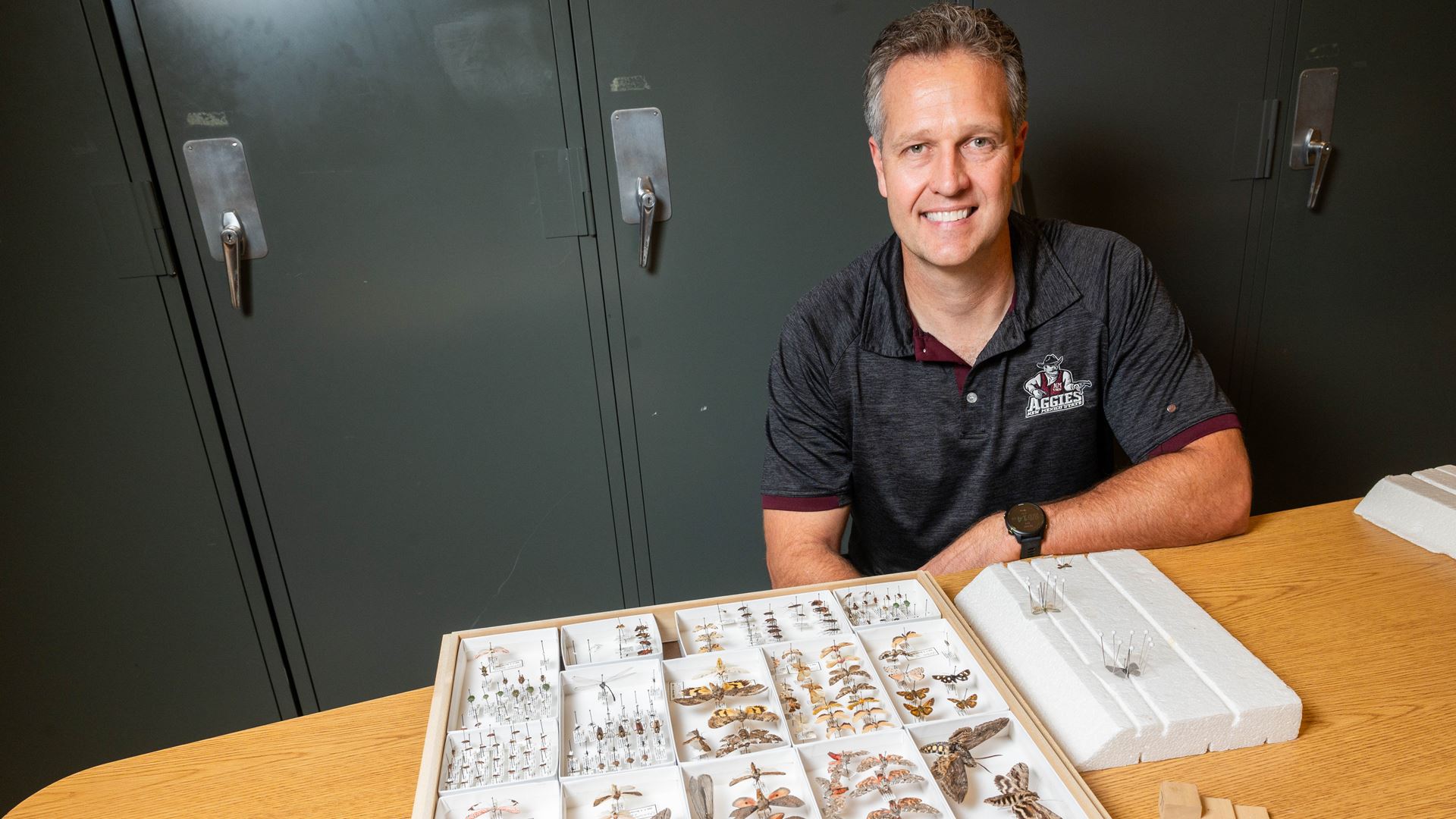Scott Bundy’s career at NMSU started in 2000. He is a professor of entomology in the Department of Entomology, Plant Pathology and Weed Science in the College of Agricultural, Consumer and Environmental Sciences and the director of the NMSU Arthropod Museum.
For many years, Bundy has taught one of the most popular classes at NMSU. It’s called “Human, Insects and the Environment,” a Viewing a Wider World course that’s open to all majors and regularly hits high enrollment numbers, averaging more than 600 students per semester. The class examines how insects affect every aspect of human life. Bundy teaches about insect biology and behavior, the importance of insects to the environment, insects as weapons of war, and insects’ impact on movies, art and culture.
As a researcher, Bundy studies the biology and impact of key arthropod pests and beneficials on New Mexico field crops. His research lab investigates economic pests such as the alfalfa weevil, blister beetles, flea beetles and painted bug (Bagrada), among others, as well as their natural enemies, with the goal of determining their impact on New Mexico agriculture and effective management.
He also studies the biology and taxonomy of the true bugs (Heteroptera). His interests include the bionomics and morphology of the Heteroptera, particularly the Pentatomoidea, stink bugs and their relatives. Bundy says many of these insects are poorly studied in New Mexico and may be pests or beneficials.
In 2011, Bundy became the director of the NMSU Arthropod Museum. The museum in Skeen Hall, Room W168, houses the largest collection of arthropods in New Mexico, with more than 500,000 specimens used for research, teaching and outreach. The specimens are the result of more than 100 years of collection and identification, representing thousands of hours of work by world authorities on many arthropod groups. The arthropod collection also has a large outreach program that reaches thousands of local students each year and has created a Virtual Insect Collection Lab.

